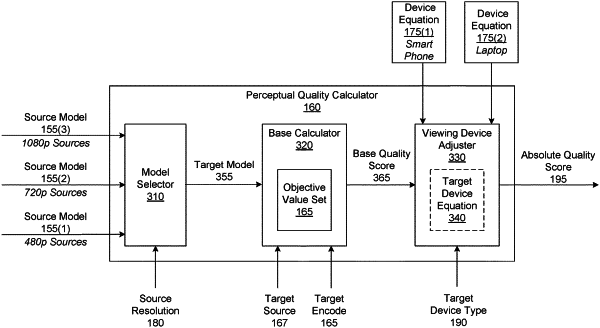| CPC H04N 19/154 (2014.11) [H04N 17/004 (2013.01); H04N 19/00 (2013.01); H04N 19/146 (2014.11); H04N 19/59 (2014.11); H04N 19/593 (2014.11); H04N 21/23418 (2013.01); H04N 21/23439 (2013.01); H04N 21/647 (2013.01)] | 27 Claims |

|
1. A computer-implemented method, comprising:
receiving, at a first type of viewing device, encoded video content from a server machine;
performing at least one decoding operation on the encoded video content to generate re-constructed video content, wherein the re-constructed video content is associated with an absolute quality score that is calculated based on both the first type of viewing device and a quality of source video content from which the encoded video content is derived; and
displaying at least one frame of the re-constructed video content on the first type of viewing device.
|